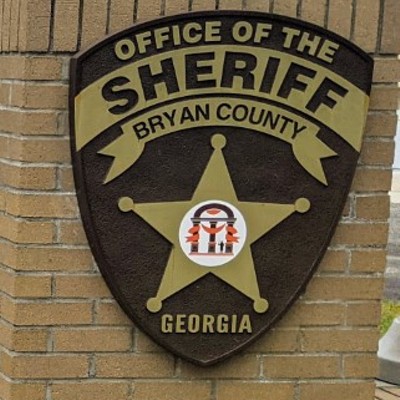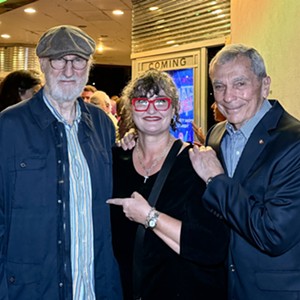Beating Testicular cancerBeating Testicular cancerBeating Testicular cancerBeating Testicular cancerBeating testicular cancer
[
{
"name": "Air - MedRect Combo - Inline Content 1",
"component": "14680855",
"insertPoint": "7",
"requiredCountToDisplay": "5",
"parentWrapperClass": "fdn-ads-inline-content-block"
},{
"name": "Air - MedRect Combo - Inline Content 2",
"component": "14680856",
"insertPoint": "15",
"requiredCountToDisplay": "9",
"parentWrapperClass": "fdn-ads-inline-content-block"
},{
"name": "Air - SVP - Leaderboard - Inline Content - 2",
"component": "16852291",
"insertPoint": "10",
"requiredCountToDisplay": "10",
"parentWrapperClass": "fdn-ads-inline-content-block"
},{
"name": "Air - SVP - Leaderboard - Inline Content - 3",
"component": "16852292",
"insertPoint": "20",
"requiredCountToDisplay": "18",
"parentWrapperClass": "fdn-ads-inline-content-block"
},{
"name": "Air - SVP - Leaderboard - Inline Content - 1",
"component": "16852290",
"insertPoint": "25",
"requiredCountToDisplay": "22",
"parentWrapperClass": "fdn-ads-inline-content-block"
}
]
What better spokesman for the fight against cancer than Lance Armstrong? In particular this seven-time Tour de France winner is a reminder of how we can beat cancer and move on with our lives.
In 1996 Lance Armstrong was diagnosed with testicular cancer, and if that were not bad enough for an athlete, his disease spread (metastasized) to his brain and lungs. Because Lance was unfamiliar with the way the disease presented itself, he chalked it up to side effects of his intense training regimen.
Of course, I should have known that something was wrong with me. But athletes, especially cyclists, are in the business of denial, Armstrong writes in his bestseller, Its Not About the Bike.
Everything hurts. Your back hurts, your feet hurt, your hands hurt, your neck hurts, your legs hurt, and of course your butt hurts. So no, I didnt pay attention to the fact that I didnt feel well in 1996. When my right testicle became slightly swollen that winter, I told myself to live with it, because I assumed it was something I had done to myself on the bike, or that my system was compensating for some physiological male thing.
Finally after six months of severe headaches, visual disturbances, coughing up blood, and worsening testicular pain he sought medical attention. The cancer, an aggressive type called choriocarcinoma that is difficult to arrest, had spread. Tests revealed 40 tumors in his lungs and two in his brain.
I was given less than a 40 percent chance of surviving, Lance wrote. And frankly, some of my doctors were just being kind when they gave me those odds.
After researching the disease Lance sought the best in the field to treat him. The one name that kept coming up was Dr. Larry Einhorn at IUMC, who in the mid-1970s pioneered the use of three chemotherapeutic drugs to treat testicular cancer. Dr. Einhorns work saved hundreds of lives. Lance also learned that the Indiana University Medical Center was the worlds leader in treating testicular cancer, so he flew out to met with Dr. Einhorn and his associates the following day.
After brain surgery to remove the tumors and an intense course of chemotherapy Lance Armstrong returned to the arena of competitive cycling a year later and went on to win seven consecutive Tour de France victories a challenge in and of itself making him the athlete of the decade or maybe the century.
Dr. Lawrence Einhorn states in an interview with reporter Patrick Perry that: Thirty years ago, if you took every single patient with testicular cancer, about 50 percent of them survived their disease. Ninety percent of patients in whom the cancer had metastasized, or spread to distant parts of the body, died. Today, 95 percent of all patients with testicular cancer and 80 percent of patients with metastatic disease are cured.
Lance is not alone. Another well-known athlete who conquered this disease is Scott Hamilton, the champion figure skater. There was even an MTV personality who went on TV with his diagnosis and video taped his surgery. All for the ratings I am sure, but nonetheless gave great exposure to the disease. Dr. Einhorn warns that there are about 8,000 new cases each year, affecting one man in 400.
Testicular exams should be a part of every young mans annual physical exam. Early detection increases the chances for cure. It is one of the many cancers that can actually be cured with very good long-term survival rates.
Self-exams should be done each month from the age of 15 to 35 just as a woman would examine her breasts for breast cancer. A lump with or without pain should be brought to the attention of your physician for further work-up.
Cisplatin was the chief drug used to treat testicular cancer but when it was combined with other drugs the success rate of cure went up drastically. The Einhorn Regiment -- nicknamed PVB for the three chemo drugs used (cisPlatin, Vinblastine, & Bleomycin ) -- had huge success and was the treatment that Lance Armstrong received.
Another type of testicular cancer responds to radiation. After surgery and chemo there are blood tests that are used (HCG and alpha-fetoprotein) as markers to monitor for cure.
Facts about Testicular Cancer:
Number-one cancer killer among young men in their 20s and 30s.
More common cancer in white males than in blacks and Asians.
In 1996 Lance Armstrong was diagnosed with testicular cancer, and if that were not bad enough for an athlete, his disease spread (metastasized) to his brain and lungs. Because Lance was unfamiliar with the way the disease presented itself, he chalked it up to side effects of his intense training regimen.
Of course, I should have known that something was wrong with me. But athletes, especially cyclists, are in the business of denial, Armstrong writes in his bestseller, Its Not About the Bike.
Everything hurts. Your back hurts, your feet hurt, your hands hurt, your neck hurts, your legs hurt, and of course your butt hurts. So no, I didnt pay attention to the fact that I didnt feel well in 1996. When my right testicle became slightly swollen that winter, I told myself to live with it, because I assumed it was something I had done to myself on the bike, or that my system was compensating for some physiological male thing.
Finally after six months of severe headaches, visual disturbances, coughing up blood, and worsening testicular pain he sought medical attention. The cancer, an aggressive type called choriocarcinoma that is difficult to arrest, had spread. Tests revealed 40 tumors in his lungs and two in his brain.
I was given less than a 40 percent chance of surviving, Lance wrote. And frankly, some of my doctors were just being kind when they gave me those odds.
After researching the disease Lance sought the best in the field to treat him. The one name that kept coming up was Dr. Larry Einhorn at IUMC, who in the mid-1970s pioneered the use of three chemotherapeutic drugs to treat testicular cancer. Dr. Einhorns work saved hundreds of lives. Lance also learned that the Indiana University Medical Center was the worlds leader in treating testicular cancer, so he flew out to met with Dr. Einhorn and his associates the following day.
After brain surgery to remove the tumors and an intense course of chemotherapy Lance Armstrong returned to the arena of competitive cycling a year later and went on to win seven consecutive Tour de France victories a challenge in and of itself making him the athlete of the decade or maybe the century.
Dr. Lawrence Einhorn states in an interview with reporter Patrick Perry that: Thirty years ago, if you took every single patient with testicular cancer, about 50 percent of them survived their disease. Ninety percent of patients in whom the cancer had metastasized, or spread to distant parts of the body, died. Today, 95 percent of all patients with testicular cancer and 80 percent of patients with metastatic disease are cured.
Lance is not alone. Another well-known athlete who conquered this disease is Scott Hamilton, the champion figure skater. There was even an MTV personality who went on TV with his diagnosis and video taped his surgery. All for the ratings I am sure, but nonetheless gave great exposure to the disease. Dr. Einhorn warns that there are about 8,000 new cases each year, affecting one man in 400.
Testicular exams should be a part of every young mans annual physical exam. Early detection increases the chances for cure. It is one of the many cancers that can actually be cured with very good long-term survival rates.
Self-exams should be done each month from the age of 15 to 35 just as a woman would examine her breasts for breast cancer. A lump with or without pain should be brought to the attention of your physician for further work-up.
Cisplatin was the chief drug used to treat testicular cancer but when it was combined with other drugs the success rate of cure went up drastically. The Einhorn Regiment -- nicknamed PVB for the three chemo drugs used (cisPlatin, Vinblastine, & Bleomycin ) -- had huge success and was the treatment that Lance Armstrong received.
Another type of testicular cancer responds to radiation. After surgery and chemo there are blood tests that are used (HCG and alpha-fetoprotein) as markers to monitor for cure.
Facts about Testicular Cancer:
Number-one cancer killer among young men in their 20s and 30s.
More common cancer in white males than in blacks and Asians.
























